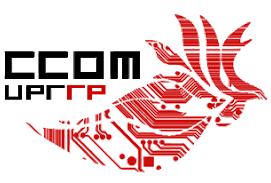

If you are interested in joining the lab, you need to meet the following requisites.
Here is an incomplete list of past projects.
Toa NMS
Abstract. Toa is an open source web based NetFlow data network monitoring system (NMS). Toa consists of a collection of scripts that automatically parse NetFlow data, store this information in a database system, and generate interactive line charts for network visualization an- alytics. The system is pseudo real time, meaning that it continuously updates the interactive charts from NetFlow data that is generated ev- ery five minutes. The system allows the users to generate customized charts from the data stored in the database system.
Current students:
Alfredo Valles, Julio de la Cruz, Ian Dávila
Past students:
Albert Maldonado, Eric Santos, Gilberto Ramos and Juan Rodriguez
Link: https://github.com/cslab-uprrp/toa
Periodic Arrays
Results on the exhaustive exploration of 3D arrays over the elementary Abelian group.
3 D Costas ( 3 x 3 x 8 ): Note that the arrays does not contain the leading *. There are 96 distinct 3D costas arrays of size 3x3x8.
We characterized the group of symmetries of this 3x3x8 arrays using algebraic symmetries.
3D Sonar ( 3 x 3 x 9 ): Note the use of -1 as the non defined value of the 3D array. There are 5832 distinct 3D sonar arrays of size 3x3x9.
Link: https://github.com/cslab-uprrp/toa
Netflow Cube
Abstract: The monitoring and analysis of big data networks to detect abnormal network behavior is a complex task for network administrators, which can not be accomplished without the aid of visualization analytics. In this work, we present a web based implementation of the three dimensional cube known as the Spinning Cube of Potential Doom using WebGL and the Three.js library. With this implementation our goal is to provide an easy to use and access cube interface, without the need to install and configure additional graphic software in a single machine. This application allows the system administrators to visualize distinct network events such as network and port scanning. In our current implementation we use data from NetFlows stored in a remote server, and provide the system administrator with a control panel that allows the selection of past data, and filtering by networks classes. The computing needed for the filtering and parsing of the data is done in the server side, the web browser is only used for the visualization.
Past Students:
Jhensen Grullon and Eric Santos